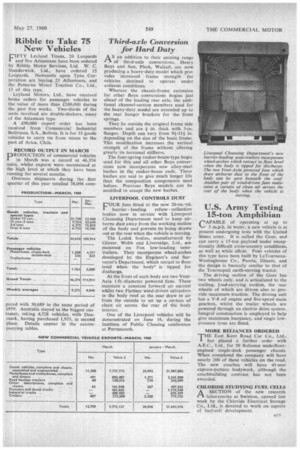Third-axle Conversion for Hard Duty
Page 49

If you've noticed an error in this article please click here to report it so we can fix it.
A S an addition to their existing range rm. of third-axle conversions, Henry Boys and Son, Pleck, Walsall, are now producing a heavy-duty model which provides increased frame strength for vehicles destined to operate under arduous conditions.
Whereas the chassis-frame extension for other Boys conversions begins just ahead of the leading rear axle, the additional channel-section members used for the heavy-duty model are extended up to the rear hanger brackets for the front springs.
They lie outside the original frame side members and are in. thick with 3-in. flanges. Depth can vary from 94-111 in. depending on the size of the basic frame. This modification increases the vertical strength of the frame without altering greatly its torsional stiffness.
The four-spring rocker-beam-type bogie used for this and all other Boys conversions now incorporates new alloy-steel bushes in the rocker-beam ends. These bushes are said to give much longer life than the composition components used before. Previous Boys models can be modified to accept the new bushes.
LIVERPOOL CONTROLS DUST
FOUR fans fitted to the new 26-cu.-yd.
barrier loading refuse collection bodies now in service with Liverpool Cleansing Department tend to keep airborne dust away from the working section of the body and prevent its being drawn out at the rear when the vehicle is moving.
The Lodek bodies, manufactured by Glover, Webb and Liversidge, Ltd., are mounted on Fox low-loading semitrailers. They incorporate wheel-arches developed by the Engineer's and Surveyor's Department, which retract to floor level when the body' is tipped for discharge.
At the front of each body are two VentAxia 1-ft.-diameter powered fans. These maintain a constant forward air current whilst two Flettner wind-driven extractors in the body roof at the rear draw in air from the outside to set up a curtain of clean air across the rear of the body interior.
One of the Liverpool vehicles will be demonstrated on June 16, during the Institute of Public Cleasing conference at Portsmouth.
















































































































